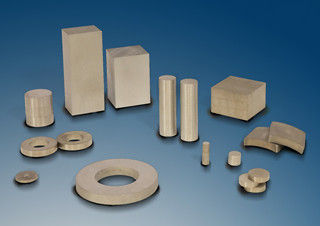『化学㉚フッ素ゴムとフッ素樹脂の違い』 河東 丈二
- nakata513
- 2024年8月27日
- 読了時間: 6分


フッ素ゴム(FKM)は、耐性・強度などのさまざまな面で優れた性能を持つゴム製品です。特に耐熱性や耐油性などに関しては、他のゴム製品よりも突出しています、また、ゴム弾性を持っています。 また、フッ素ゴムの素となるフッ素樹脂(fluorocarbon polymers)とは、フッ素を含むオレフィンを重合して得られる合成樹脂の総称である。耐熱性耐薬品性の高さや摩擦係数の小さいことが特徴である。中でも最も大量に生産されているフッ素樹脂はポリテトラフルオロエチレン〈四フッ化樹脂〉である。
また、フッ素ゴムは部分フッ素樹脂あるいはフッ素樹脂の共重合体をフォームに加工したものである。
フッ素ゴムを覚える前に、フッ素樹脂を覚える必要性があるのでフッ素樹脂から話しましょう。
フッ素樹脂で最初に開発されたポリテトラフルオロエチレンは、260 ℃の耐熱性を持つが熱可塑性を示さず、加工性が悪い素材である。加圧成形焼成法、押出し成形法によって成形する。
成形性を高めるために、完全にフッ素化されているポリテトラフルオロエチレンの、フッ素基の一部を水素または塩素で置換したり、オレフィンとしたさまざまなクロロトリフルオロエチレン樹脂やポリフッ化ビニリデン樹脂が開発された。これらの樹脂は耐熱性でポリテトラフルオロエチレンに劣るものの加工性は高く、圧縮、押出し、射出成形が可能な素材である。
金属部品に静電粉体コーティング(パウダーコート)したり、エポキシ樹脂とともにシート状に加工されて、金属製あるいは非金属性輸送コンテナの内張りとして取り付けられる場合もある。
分類
完全フッ素化樹脂
ポリテトラフルオロエチレン(四フッ素化樹脂、略号:PTFE)
部分フッ素化樹脂
ポリクロロトリフルオロエチレン(三フッ素化樹脂、略号:PCTFE, CTFE)
ポリフッ化ビニリデン(略号:PVDF)
ポリフッ化ビニル(略号:PVF)
フッ素化樹脂共重合体
ペルフルオロアルコキシフッ素樹脂(略号:PFA)
四フッ化エチレン・六フッ化プロピレン共重合体(略号:FEP)
エチレン・四フッ化エチレン共重合体(略号:ETFE)
エチレン・クロロトリフルオロエチレン共重合体(略号:ECTFE)
フッ素ゴムは他の合成ゴムに比べ、卓越した耐熱性・耐油性・耐薬品性を有したゴムです。
これは共重合組成に非常に強固なC-F結合(フッ素結合)を持つ為です。
他の合成ゴムに多く見られるC-H結合では結合力に劣りこの性能を実現出来ません。
このC-F結合こそがフッ素ゴムに卓越した耐熱性・耐油性・耐薬品性を与えるものなのです。
1957年世界で最初の商標が「バイトン」だった事もあり日本に輸入されてきたFKMは
バイトンの名で広まりました。
この影響か今でもFKMは全てバイトンと認識されている方もいます。
ポータブル音楽プレーヤー=ウォークマンと呼んでしまうのと同じ現象でしょうか。
1969年に打ち上げられたアポロ11号に乗り込んだ宇宙飛行士たちが履いていたブーツが3M社製のフッ素ゴムであったのが有名です。
地球上で最も過酷な環境で使用されるゴムというイメージはここから始まったのかもしれません。
FKMの呼称の由来
FはFluoro(フルオロ)。フッ素化されたという意味です。 KはKautschuk(カウツチョク)。ドイツ語でラバーの意味。 MはMグループ。ポリメチレンタイプの飽和主鎖を持つゴムという意味です。
FKMの組成構造
2元系型フッ素ゴム VDF - HFP 共重合体 (VDF:フッ化ビニリデン、HFP:6フッ化プロピレン) 3元系フッ素ゴム VDF - HFP - TFE 共重合体 (VDF:フッ化ビニリデン、HFP:6フッ化プロピレン、TFE:4フッ化エチレン) 低温タイプフッ素ゴム VDF - PMVE - TFE 共重合体 (VDF:フッ化ビニリデン、PMVE:パーフルオロメチルビニルエーテル、TFE:4フッ化エチレン)
2元系と3元系の違い
2元系:(代表例)VDF – HFP系
主に耐熱性・耐油性に優れるスタンダードなタイプ。 また低温性と耐薬品性の性能バランスも良くコストパフォーマンスが高いです。 FKMといえばこのタイプで市場の80%近くを占めており各ポリマーメーカーの主力品。 この他に耐酸性に優れたVDF – CTFE系もあります。
3元系:(代表例)VDF – HFP – TFE 系
VDFを減らしてその分TFEを増やしたタイプ。 VDF-HFPの上位互換のような位置付けで機械的特性や化学的特性に優れており またフッ素含有量が多い為耐薬品性にも優れています。その分低温性が劣りますが…。 代わりにこの欠点を解消した低温性に優れたVDF – PMVE – TFE系もあります。
"Chemical ㉚ Difference between Fluororubber and Fluoroplastics"
Fluorine rubber (FKM) is a rubber product that has excellent performance in various aspects such as resistance and strength. In particular, it is more outstanding than other rubber products in terms of heat resistance and oil resistance, and also has rubber elasticity. Fluorine resin (fluorocarbon polymers), which is the base material of fluororubber, is a general term for synthetic resin obtained by polymerizing olefins containing fluorine. It is characterized by high heat resistance and chemical resistance and a small coefficient of friction. The fluororesin that is most mass-produced is polytetrafluoroethylene (tetrafluororesin).
Fluorine rubber is a foam processed from partial fluorine resin or fluorine resin copolymer.
"Teflon" is a trademark of DuPont's fluororesin and its processed products.
Before learning about fluororubber, it is necessary to learn about fluororesins, so let's start with fluororesins.
Polytetrafluoroethylene, the first fluororesin developed, has heat resistance of 260 °C but does not show thermoplasticity and is a material with poor processability. It is molded by pressure molding baking method and extrusion molding method.
To improve moldability, various chlorotrifluoroethylene and polyvinylidene fluoride resins have been developed in which some of the fluorine groups in fully fluorinated polytetrafluoroethylene have been replaced with hydrogen or chlorine, or olefins. These resins are less heat-resistant than polytetrafluoroethylene, but are highly processable and can be compressed, extruded, or injection molded.
They are sometimes used as electrostatic powder coats on metal parts or processed into sheets with epoxy resins to be installed as linings for metallic and non-metallic shipping containers.
Classification
Fully fluorinated resin
Polytetrafluoroethylene (tetrafluororesin, abbreviation: PTFE)
Partially fluorinated resin
Polychlorotrifluoroethylene (trifluororesin, abbreviation: PCTFE, CTFE)
Polyvinylidene fluoride (abbreviation: PVDF)
Polyvinyl fluoride (abbreviation: PVF)
Fluorinated resin copolymer
Perfluoroalkoxy fluororesin (abbreviation: PFA)
Tetrafluoroethylene-hexafluoropropylene copolymer (abbreviation: FEP)
Ethylene-tetrafluoroethylene copolymer (abbreviation: ETFE)
Ethylene-chlorotrifluoroethylene copolymer (abbreviation: ECTFE)
Fluororubber is a rubber with superior heat resistance, oil resistance, and chemical resistance compared to other synthetic rubbers.
This is because the copolymer composition contains very strong C-F bonds (fluorine bonds).
The C-H bonds commonly found in other synthetic rubbers have inferior bonding strength and cannot achieve this performance.
It is this C-F bond that gives fluororubber its outstanding heat resistance, oil resistance, and chemical resistance.
In 1957, the world's first trademark was "Viton," and FKM imported to Japan
went viral under the name Viton.
Perhaps because of this, some people still think that all FKM is Viton.
This is the same phenomenon as when we call portable music players "Walkmans."
It is well known that the boots worn by the astronauts aboard the Apollo 11, launched in 1969, were made of fluororubber manufactured by 3M.
This may be where the image of rubber being used in the harshest environments on Earth began.
The origin of the name FKM
F stands for Fluoro, which means fluorinated.
K stands for Kautschuk, which means rubber in German.
M stands for M group, which means rubber with a polymethylene-type saturated main chain.
Composition of FKM
Binary fluororubber VDF - HFP copolymer
(VDF: vinylidene fluoride, HFP: propylene hexafluoride)
Tertiary fluororubber VDF - HFP - TFE copolymer
(VDF: vinylidene fluoride, HFP: propylene hexafluoride, TFE: ethylene tetrafluoride)
Low temperature type fluororubber VDF - PMVE - TFE copolymer
(VDF: vinylidene fluoride, PMVE: perfluoromethyl vinyl ether, TFE: ethylene tetrafluoride)
Difference between binary and ternary systems
Binary system: (Representative example) VDF - HFP system
Standard type with excellent heat resistance and oil resistance.
It also has a good balance of low temperature and chemical resistance, and is cost-effective.
This type of FKM accounts for nearly 80% of the market and is the main product of each polymer manufacturer.
There is also the VDF - CTFE system, which has excellent acid resistance.
Ternary system: (Representative example) VDF – HFP – TFE system
A type that reduces VDF and increases TFE accordingly.
It is positioned as a higher-grade version of VDF-HFP and has excellent mechanical and chemical properties
It also has excellent chemical resistance due to its high fluorine content. However, it has poor low-temperature properties...
As an alternative, there is the VDF – PMVE – TFE system, which has excellent low-temperature properties and eliminates this drawback.



コメント